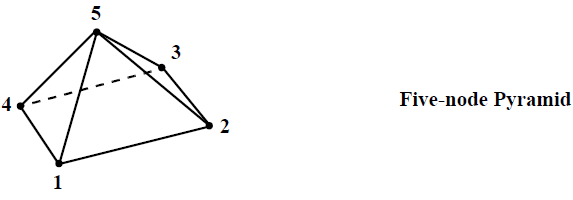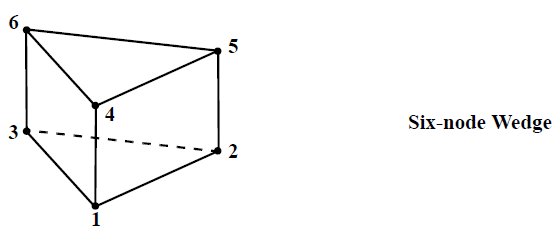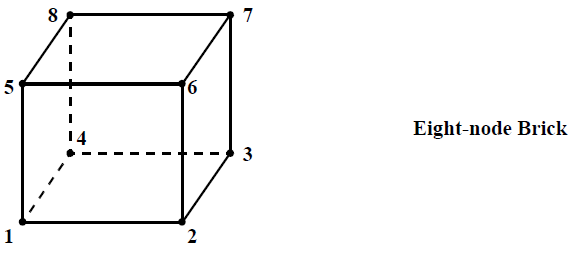VOLUME_SET
Specifies topological information for a set of volumetric elements.
Type
AcuSolve Command
Syntax
VOLUME_SET ("name") { parameters...}
Qualifier
User-given name.
Parameters
- Shape (enumerated) [no default]
- Shape of the elements.
- four_node_tet or tet4
- Four-node tetrahedron.
- five_node_pyramid or pyramid5
- Five-node pyramid.
- six_node_wedge or wedge6
- Six-node wedge (prism).
- eight_node_brick or hex8
- Eight-node brick (hexahedron).
- ten_node_tet or tet10
- Ten-node tetrahedron.
- elements (array) [no default]
- A set of element connectivity.
Description
VOLUME_SET( "tetrahedra" ) {
elements = { 1, 1, 2, 4, 3 ;
2, 3, 4, 6, 5 ;
3, 5, 6, 8, 7 ; }
shape = four_node_tet
}
VOLUME_SET( "prisms" ) {
elements = { 1, 1, 2, 4, 9, 10, 11 ;
2, 3, 4, 6, 12, 13, 14 ;
3, 5, 6, 8, 15, 16, 17 ; }
shape = six_node_wedge
}
ELEMENT_SET( "fluid elements" ) {
volume_sets = { "tetrahedra", "prisms" }
medium = fluid
...
}The elements and shape parameters of the VOLUME_SET command are mandatory. shape specifies the shape (topology) of the elements in the set. elements provides the element connectivity. This parameter is a multi column array, with one row per element. The first column corresponds to the element numbers, which are unique numbers within each volume set. Negative values are acceptable. The remaining columns are the element nodes. The number of element nodes and their order must match the shape of the volume set. The element node numbers must be valid numbers, as given by the COORDINATE command.

Figure 1. Four-node Tetrahedron Element

Figure 2. Five-node Pyramid Element

Figure 3. Six-node Wedge Element

Figure 4. Eight-node Brick Element

Figure 5. Ten-node Tetrahedron Element
1 1 2 4 3
2 3 4 6 5
3 5 6 8 71 1 2 4 9 10 11
2 3 4 6 12 13 14
3 5 6 8 15 16 17VOLUME_SET( "tetrahedra" ) {
elements = Read("tetrahedra.cnn")
shape = four_node_tet
}
VOLUME_SET( "prisms" ) {
elements = Read("prisms.cnn")
shape = six_node_wedge
}Each VOLUME_SET command must be referenced in an ELEMENT_SET command in order to have the elements participate in the solution. For example, it is not possible to define a VOLUME_SET strictly for ELEMENT_OUTPUT purposes without using it in an ELEMENT_SET command.